Machine vision inspection of packaging
Heat-sealed packaging
Heat-sealed packages are those in which the trays are thermoformed prior to the sealing process. They are usually manufactured by specialised packaging producers at a high production rate, and are supplied in stacks to the different food producers who introduce them into the production process, placing the food to be packaged inside.
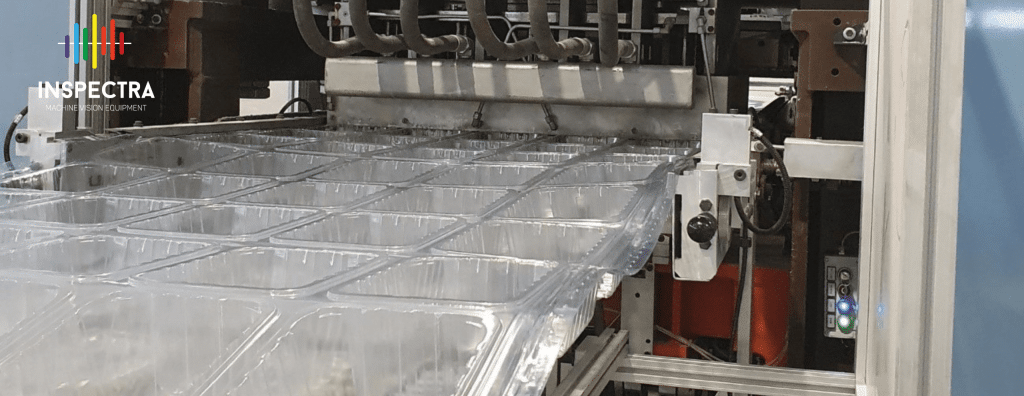
Once the producer positions the food inside the tray, it is taken to a heat-sealing machine, where a top film is attached and sealed into the tray by applying heat, melting the plastic layer in contact with the tray surface, creating an airtight seal. The atmosphere inside the package is usually modified to increase the shelf life of the food. These packs are very common in the food industry and are used to preserve the freshness and quality of products, as well as to ensure their safety.
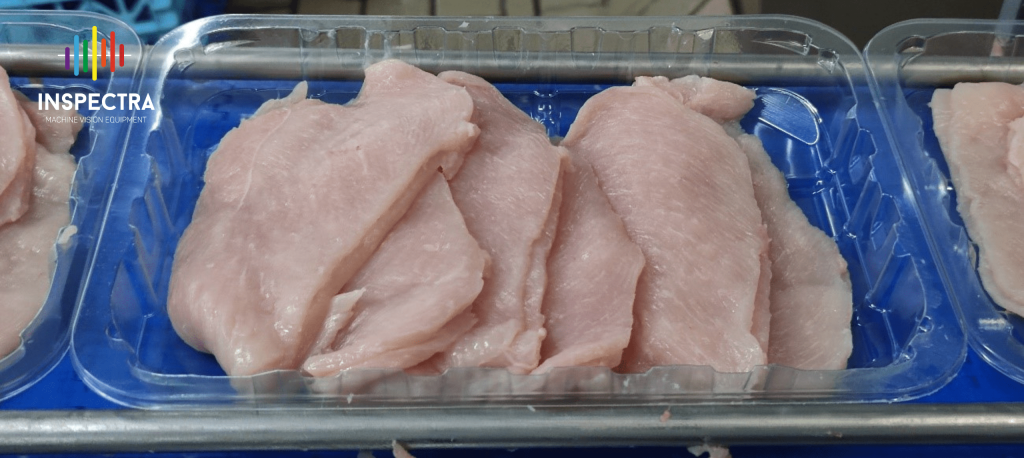
The heat-sealing process involves the application of controlled heat and pressure to fuse layers of material together to form an airtight seal. Heat-sealed packaging is used in a wide variety of industries and products. In the food industry, they are common in the packaging of fresh produce, such as meat, poultry, fish, fruit, vegetables and dairy products. They are also used in processed foods, such as ready meals, snacks and vacuum-packed foods. Other industries, such as pharmaceuticals, use heat-sealed packaging to protect and preserve medicines and medical products.
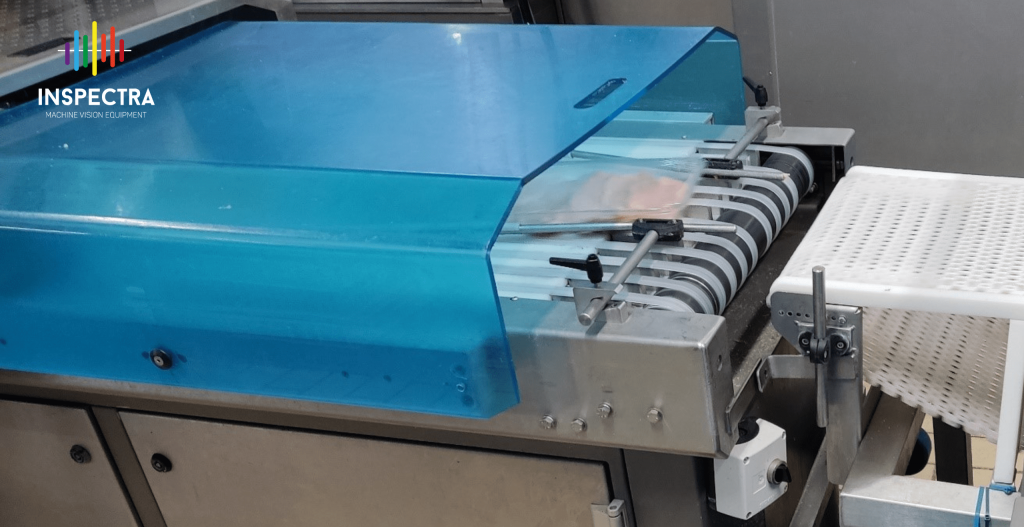
In the production process of foodstuffs packaged in this type of packaging, faults can occur that cause different quality defects, the most common of which compromise the quality of the product, since if the sealing is not done correctly, air, humidity or microorganisms are allowed to enter, as well as allowing the modified atmosphere of the packaging to escape, compromising the quality and safety of the product. Another series of defects affect the packaged product itself, due to quality failures during the food production process or due to contamination by foreign bodies.
The final process of packaging is the legally required labelling, which identifies the packaged product, marking the production batch and other aspects such as the best-before date, the ingredients of the food or the price, for example.

Some of the most common defects in packaged foods are usually the following:
- Product entrapment in welding: This occurs when the welding area is contaminated with the packaged product itself, resulting in a defective weld.

- Chimneys or folds in the sealing film: Sometimes the sealing film is not properly tensioned and has a fold that results in a path for air to enter the weld.

- Deformed tray: It may be the case that the tray is deformed, and this causes the welding band to fall out of the tray, resulting in a defective seal.
- Cracked tray: Sometimes the sealing failure is caused by the tray breaking, either due to a manufacturing defect or due to the impact of the tray during transport to the end of the line.
- Product contamination: Often during the production process foreign bodies can be introduced into the tray (wood chips, glove residues, paper, labels, plastics, …) or the contamination can be due to a faulty production process (bones, feathers, clots, …) which are not detectable by metal detectors.
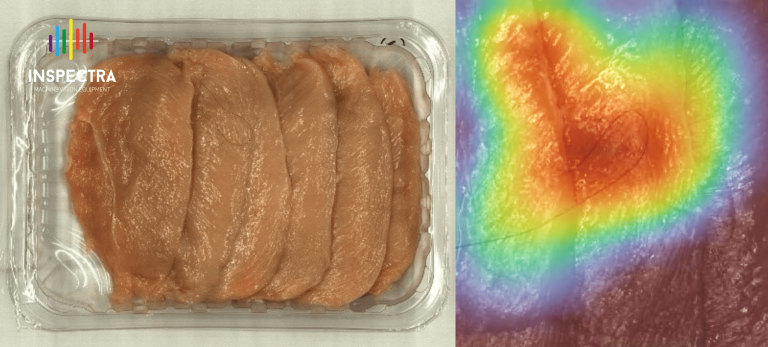
- Failure in labelling: Sometimes the label is not positioned in the right place, or there is no label, or two of them, or the printed codes are wrong, or the pre-printing of the label is wrong (the wrong reel has been loaded).
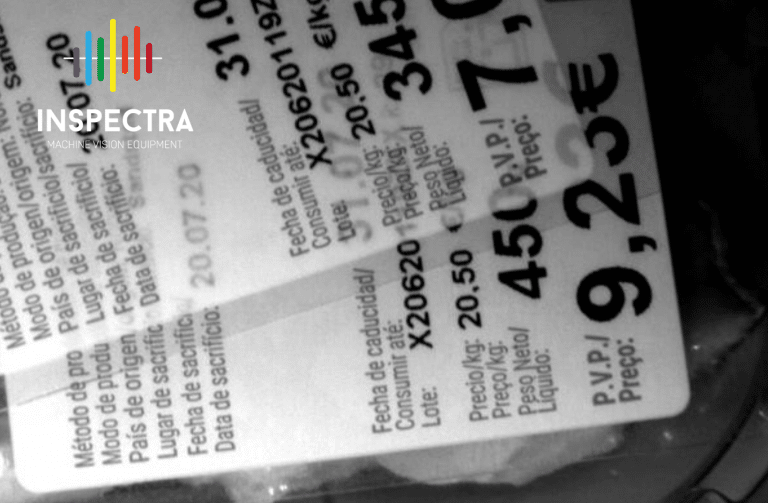
At INNDEO&INSPECTRA we use different artificial vision techniques for the detection of defects in heat-sealed trays.
One of the most effective techniques for the detection of defects in heat-sealed packaging that we implement in our Thermoseal Inspector equipment is monospectral vision technology together with artificial intelligence (Deep Learning).
Monospectral vision technology uses cameras that capture images in a single frequency band, either within the visible or infrared spectrum, producing black and white images. These cameras can detect specific material characteristics and properties, such as the presence of cracks, air bubbles, tears or lack of seals in heat-sealed packs that go unnoticed by end-of-line pack inspection operators. Given that the container inspection equipment incorporates up to 5 cameras, different types of cameras can be used for different objectives (opaque films, contamination by grease, foreign bodies of the same colour as the product, etc.).
Deep Learning, on the other hand, is a branch of artificial intelligence based on multi-layered artificial neural networks. These networks are able to automatically learn patterns and features in large data sets. By training a neural network with images of defective and non-defective heat-sealed packaging, it is possible to develop a model that can recognise and classify defects with high accuracy.
On the other hand, INSPECTRA has the LABEL CHECKER label inspection software that can detect most of the common quality defects in the labelling process, which allows inspecting labels on any side of the pack.
During the process of detecting defects in heat-sealed containers we follow the following steps:
Image acquisition: High-resolution images of the heat-sealed containers are captured using high-resolution cameras with the most appropriate filters for each type of container. These images can be in the visible spectrum or in other specific spectra depending on the characteristics to be analysed. Usually, inspection equipment for this type of packaging incorporates three different inspection cameras, which allows images to be captured of both sides of the packaging and of the sealing area with different lighting systems.
Image pre-processing: Captured images are pre-processed to improve image quality, remove noise and enhance relevant features. This may include techniques such as filtering, colour correction, segmentation and normalisation. If defects can be detected by colour tone matching, it is recommended to use this technique, in case additional distinction is needed, it is recommended to use artificial intelligence. By means of shade comparison, most of the defects can be detected by trapping and contamination of blue plastics or foreign bodies of a very different shade from the product.
Image bank generation: If artificial intelligence is used, it is necessary to tag the acquired images to indicate whether each one corresponds to a defective or non-defective package. This involves manually annotating each image as “defective” or “non-defective” to build a training dataset. This task is usually performed in image batches, separating the containers that are detected as defective during the manual inspection process, and labelling the capture batches automatically by capturing all the images in a row for each type of defect to be trained.
Training the neural network: Using the labelled dataset, a deep neural network is trained using supervised learning techniques. The neural network learns to recognise the patterns and characteristics that distinguish defective heat-sealed packs from non-defective ones, and teaches the inspection team to identify the different quality faults (folded film, wrinkled film, seam integrity, foreign bodies that are mistaken for colour (foreign bodies, hairs, feathers, bones, clots,…).
Model validation and tuning: The trained model is validated using test data sets to assess its performance and accuracy. If necessary, additional adjustments are made to improve its detection capability and reduce errors.
Implementation and deployment: Once the model has been validated and fine-tuned, it is implemented in a real-time system for the automatic detection of defects in heat-sealed packs. This can be on a production line or at a quality control stage downstream of the packaging process.
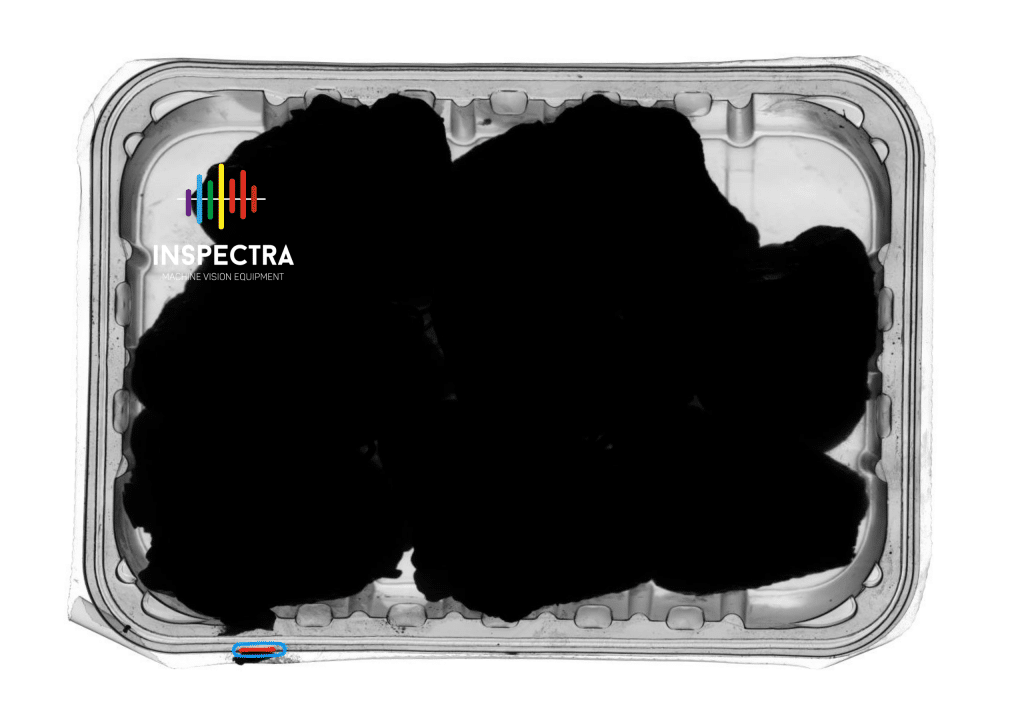
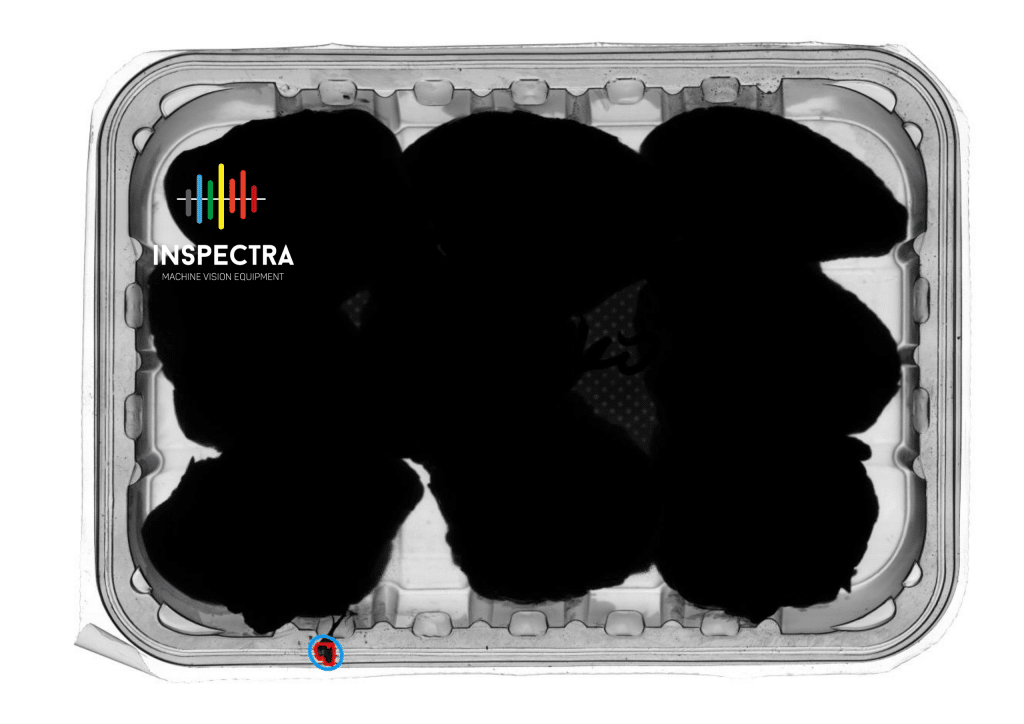
Defect detection in heat-sealed packaging by implementing both technologies offers several significant advantages:
Increased accuracy and reliability: the use of Deep Learning allows highly accurate and reliable models for defect detection to be trained. These models are able to recognise subtle patterns and specific packaging characteristics, resulting in more accurate and reliable defect detection.
Automation and efficiency: Monospectral vision technology and Deep Learning enable automation of the defect detection process. This means no extensive manual inspection is required, saving time and reducing costs associated with labour.
Early defect detection: By implementing in-line detection systems, it is possible to identify defects in real time during the production process. This allows early intervention to correct problems and minimise waste.
Adaptability to different types of defects: Deep Learning algorithms are able to learn and adapt to different types of defects in heat-sealed packaging. They can recognise a wide range of defects, such as tears, wrinkles, lack of sealing or contamination, among others.
Continuous monitoring and quality statistics: Systems based on monospectral vision technology and Deep Learning can provide detailed data and statistics on the quality of the packaging. This allows for continuous monitoring of defects, identification of trends and improvements in production processes.
In short, the combination of mono-spectral vision technology together with artificial intelligence (Deep Learning) offers a number of advantages that make it one of the most suitable and effective options for the detection of defects in heat-sealed packaging.


















